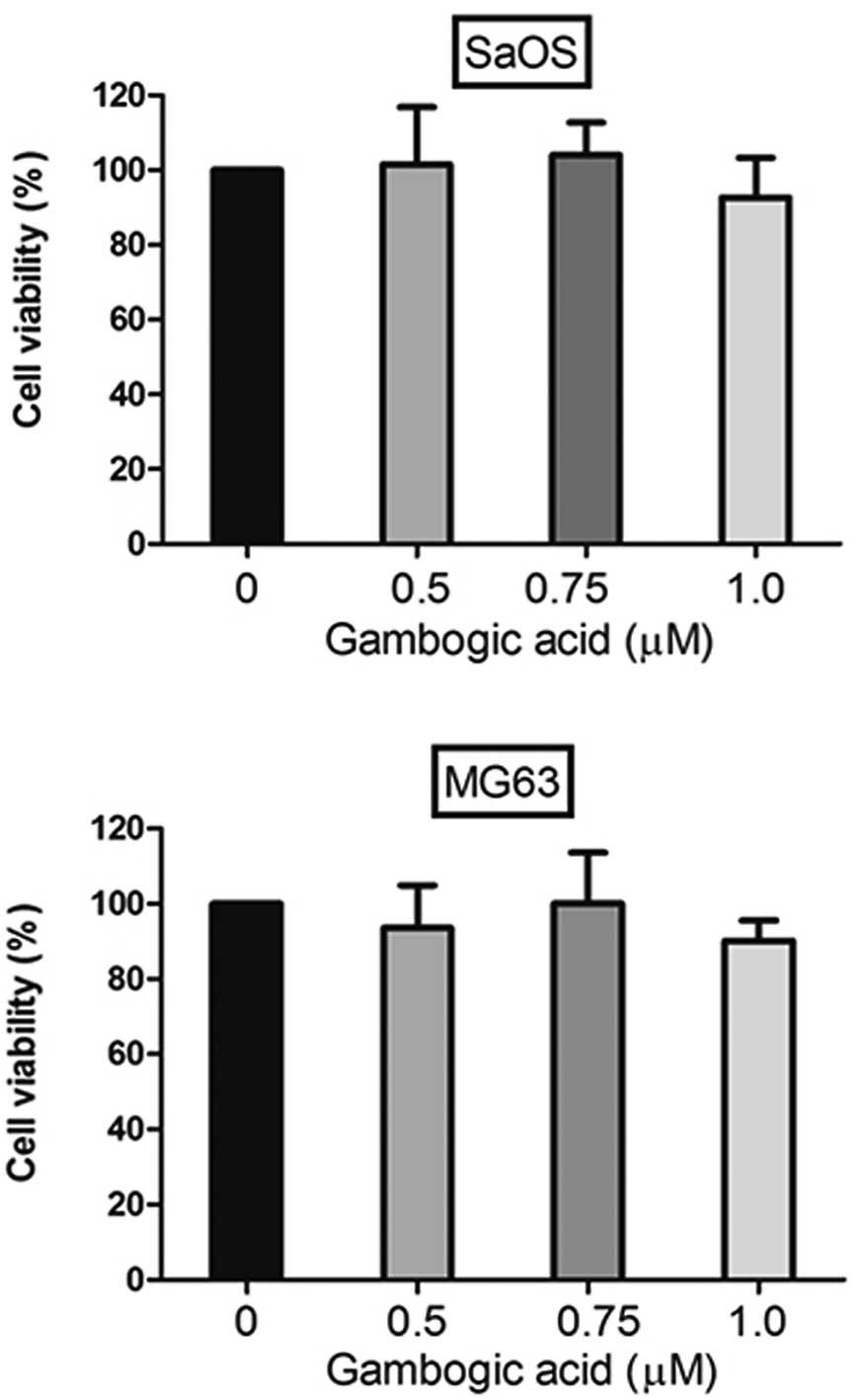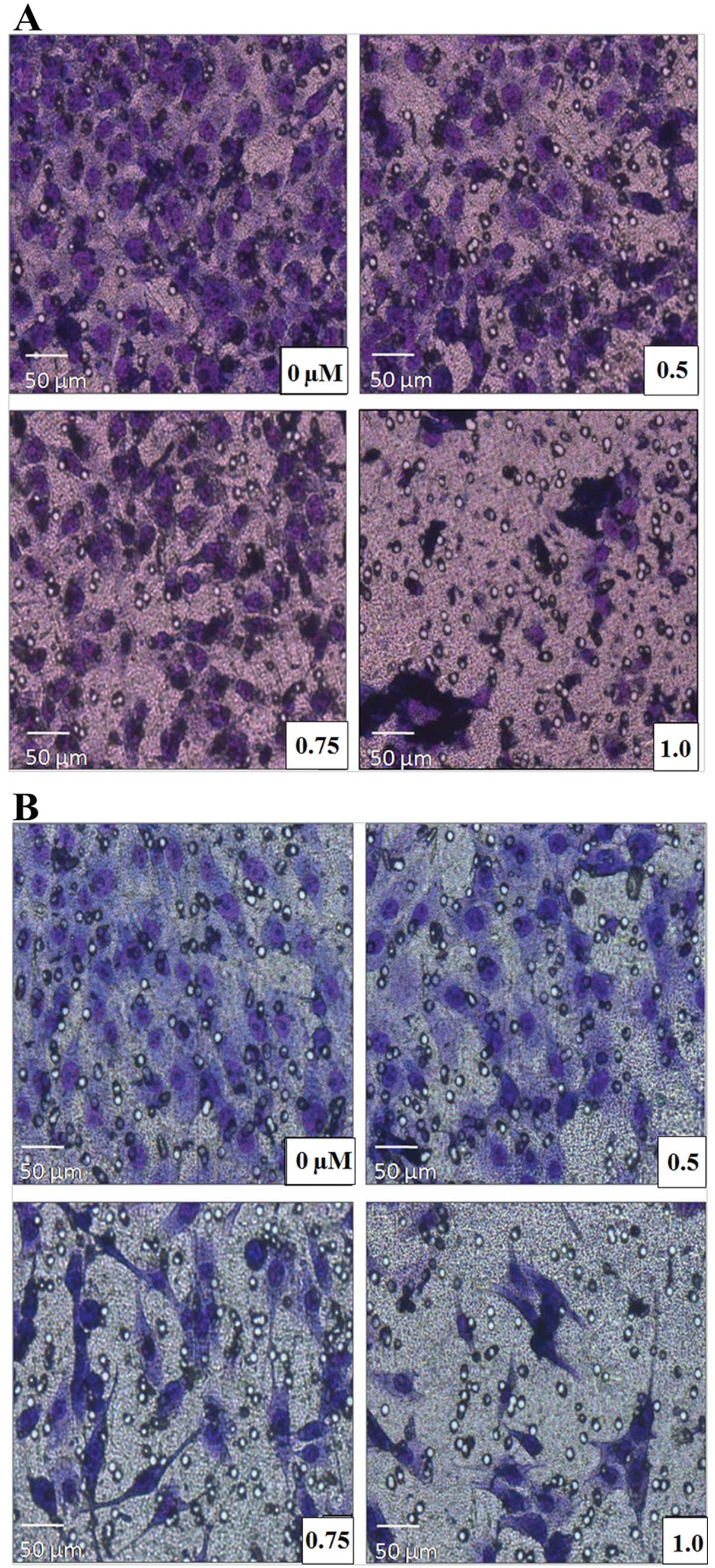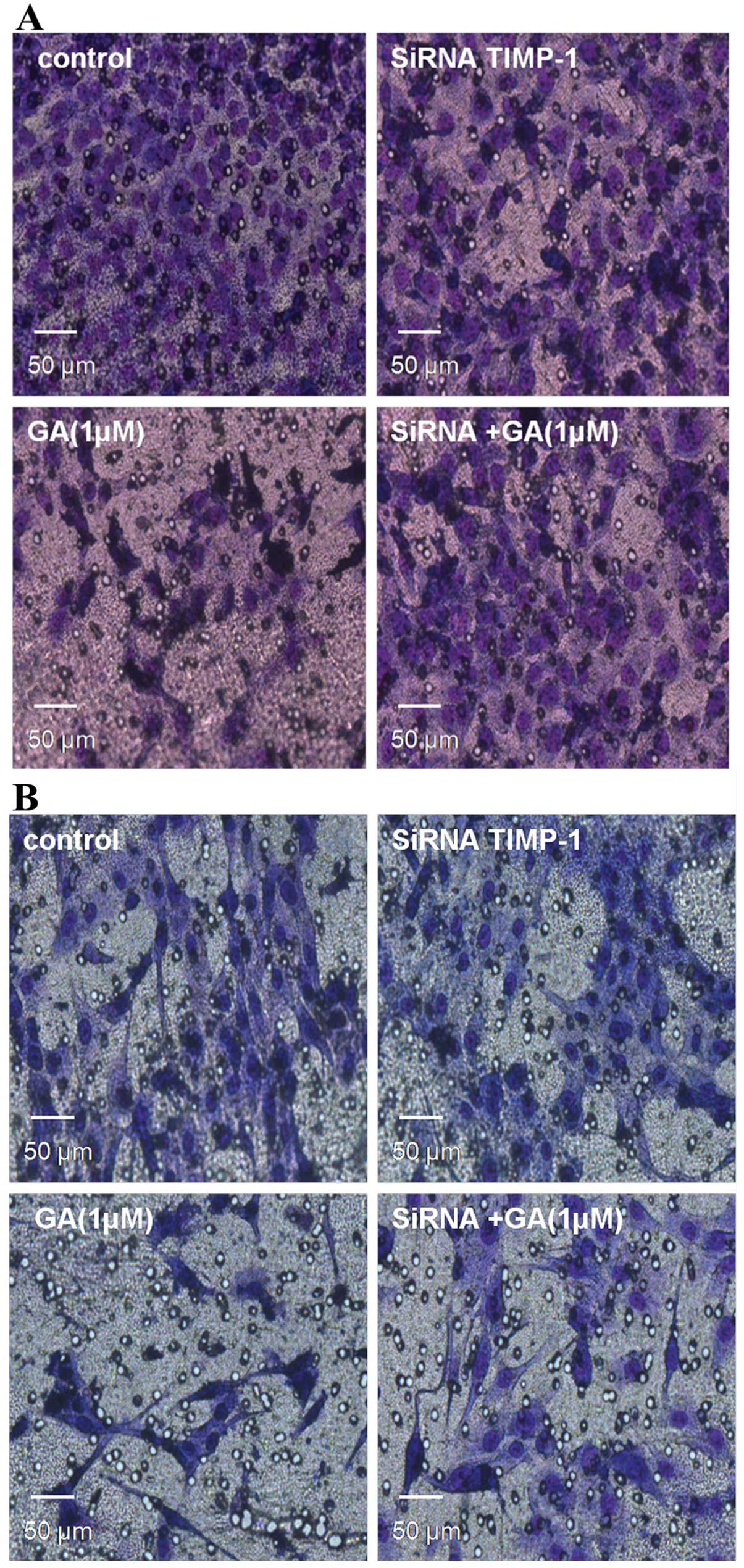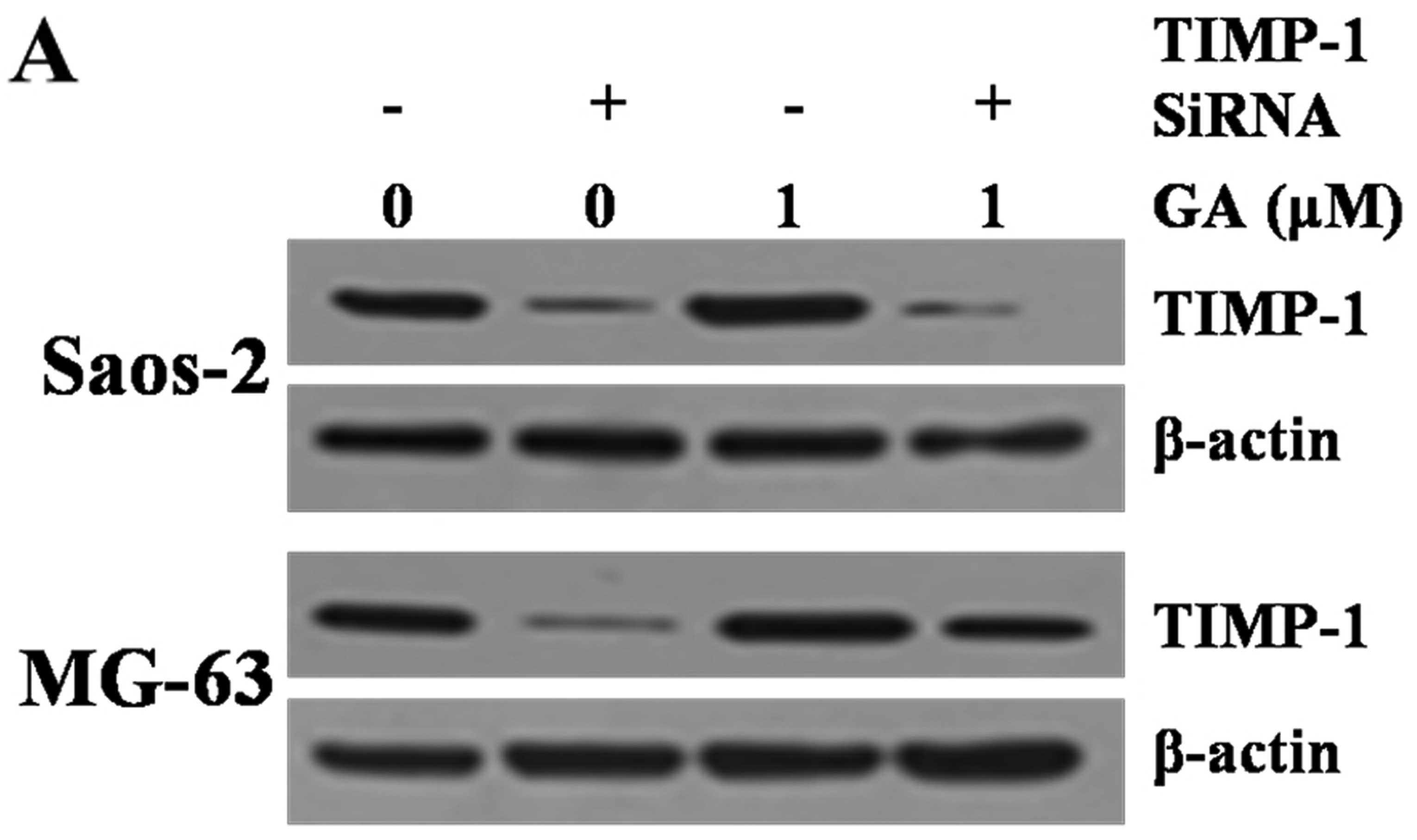|
1
|
Bacci G, Longhi A, Fagioli F, Briccoli A,
Versari M and Picci P: Adjuvant and neoadjuvant chemotherapy for
osteosarcoma of the extremities: 27 year experience at Rizzoli
Institute, Italy. Eur J Cancer. 41:2836–2845. 2005.PubMed/NCBI
|
|
2
|
Bielack SS, Kempf-Bielack B, Delling G,
Exner GU and Flege S: Prognostic factors in high-grade osteosarcoma
of the extremities or trunk: an analysis of 1,702 patients treated
on neoadjuvant cooperative osteosarcoma study group protocols. J
Clin Oncol. 20:776–790. 2002. View Article : Google Scholar
|
|
3
|
Ferrari S, Briccoli A, Mercuri M, Bertoni
F and Picci P: Postrelapse survival in osteosarcoma of the
extremities: prognostic factors for long-term survival. J Clin
Oncol. 21:710–715. 2003. View Article : Google Scholar : PubMed/NCBI
|
|
4
|
Hauben EI, Arends J, Vandenbroucke JP, van
Asperen CJ, van Marck E and Hogendoorn PC: Multiple primary
malignancies in osteosarcoma patients. Incidence and predictive
value of osteosarcoma subtype for cancer syndromes related with
osteosarcoma. Eur J Human Genetics. 11:611–618. 2003. View Article : Google Scholar : PubMed/NCBI
|
|
5
|
Link MP: Preoperative and adjuvant
chemotherapy in osteosarcoma. Frontiers of Osteosarcoma Research:
Interdisciplinary Survey of Clinical and Research Advances. Novak
JF and Mcmaster JH: Hogrefe and Huber; Seattle: pp. 41–49. 1993
|
|
6
|
Wolf K and Friedl P: Mapping proteolytic
cancer cell-extracellular matrix interfaces. Clin Exp Metastasis.
26:289–298. 2009. View Article : Google Scholar : PubMed/NCBI
|
|
7
|
Clark IM, Swingler TE, Sampieri CL and
Edwards DR: The regulation of matrix metalloproteinases and their
inhibitors. Int J Biochem Cell Biol. 40:1362–1378. 2008. View Article : Google Scholar : PubMed/NCBI
|
|
8
|
Visse R and Nagase H: Matrix
metalloproteinases and tissue inhibitors of metalloproteinases:
structure, function, and biochemistry. Circ Res. 92:827–839. 2003.
View Article : Google Scholar : PubMed/NCBI
|
|
9
|
Brinckerhoff CE and Matrisian LM: Matrix
metalloproteinases: a tail of a frog that became a prince. Nat Rev
Mol Cell Biol. 3:207–214. 2002. View
Article : Google Scholar : PubMed/NCBI
|
|
10
|
Egeblad M and Werb Z: New functions for
the matrix metalloproteinases in cancer progression. Nat Rev
Cancer. 2:161–174. 2002. View
Article : Google Scholar : PubMed/NCBI
|
|
11
|
Chambers AF and Matrisian LM: Changing
views of the role of matrix metalloproteinases in metastasis. J
Natl Cancer Inst. 89:1260–1270. 1997. View Article : Google Scholar : PubMed/NCBI
|
|
12
|
Hidalgo M and Eckhardt SG: Development of
matrix metalloproteinase inhibitors in cancer therapy. J Natl
Cancer Inst. 93:178–193. 2001. View Article : Google Scholar : PubMed/NCBI
|
|
13
|
Denhardt DT, Feng B, Edwards DR, Cocuzzi
ET and Malyankar UM: Tissue inhibitor of metalloproteinases (TIMP,
aka EPA): structure, control of expression and biological
functions. Pharmacol Ther. 59:329–341. 1993. View Article : Google Scholar : PubMed/NCBI
|
|
14
|
Phillips BW, Sharma R, Leco PA and Edwards
DR: A sequence-selective single-strand DNA-binding protein
regulates basal transcription of the murine tissue inhibitor of
metalloproteinases-1 (Timp-1) gene. J Biol Chem. 274:22197–22207.
1999. View Article : Google Scholar
|
|
15
|
Kossakowska AE, Urbanski SJ and Edwards
DR: Tissue inhibitor of metalloproteinases-1 (TIMP-1) RNA is
expressed at elevated levels in malignant non-Hodgkin’s lymphomas.
Blood. 77:2475–2481. 1991.
|
|
16
|
Yoshiji H, Gomez DE and Thorgeirsson UP:
Enhanced RNA expression of tissue inhibitor of metalloproteinases-1
(TIMP-1) in human breast cancer. Int J Cancer. 69:131–134. 1996.
View Article : Google Scholar : PubMed/NCBI
|
|
17
|
Fong KM, Kida Y, Zimmerman PV and Smith
PJ: TIMP1 and adverse prognosis in non-small cell lung cancer. Clin
Cancer Res. 2:1369–1372. 1996.PubMed/NCBI
|
|
18
|
Bjørnland K, Flatmark K, Pettersen S,
Aaasen AO, Fodstad O and Maelandsmo GM: Matrix metalloproteinases
participate in osteosarcoma invasion. J Surg Res. 127:151–156.
2005.PubMed/NCBI
|
|
19
|
Korpi JT, Hagström J, Lehtonen N, et al:
Expression of matrix metalloproteinases-2, -8, -13, -26, and tissue
inhibitors of metalloproteinase-1 in human osteosarcoma. Surg
Oncol. 20:e18–e22. 2011. View Article : Google Scholar : PubMed/NCBI
|
|
20
|
Zhao W, Zhou SF, Zhang ZP, Xu GP, Li XB
and Yan JL: Gambogic acid inhibits the growth of osteosarcoma cells
in vitro by inducing apoptosis and cell cycle arrest. Oncol
Rep. 25:1289–1295. 2011.
|
|
21
|
Guo QL, You QD, Wu ZQ, Yuan ST and Zhao L:
General gambogic acids inhibited growth of human hepatoma SMMC-7721
cells in vitro and in nude mice. Acta Pharmacol Sin. 25:769–774.
2004.PubMed/NCBI
|
|
22
|
Yu J, Guo QL, You QD, et al: Gambogic
acid-induced G(2)/M phase cell-cycle arrest via disturbing
CDK7-mediated phosphorylation of CDC2/p34 in human gastric
carcinoma BGC-823 cells. Carcinogenesis. 28:632–638. 2007.
View Article : Google Scholar : PubMed/NCBI
|
|
23
|
Kasibhatla S, Jessen KA, Maliartchouk S,
et al: A role for transferrin receptor in triggering apoptosis when
targeted with gambogic acid. Proc Natl Acad Sci USA.
102:12095–12100. 2005. View Article : Google Scholar : PubMed/NCBI
|
|
24
|
Chen J, Gu HY, Lu N, et al: Microtubule
depolymerization and phosphorylation of c-Jun n-terminal kinase-1
and p38 were involved in gambogic acid induced cell cycle arrest
and apoptosis in human breast carcinoma McF-7 cells. Life Sci.
83:103–109. 2008. View Article : Google Scholar : PubMed/NCBI
|
|
25
|
Wu ZQ, Guo QL, You QD, Zhao L and Gu HY:
Gambogic acid inhibits proliferation of human lung carcinoma SPC-A1
cells in vivo and in vitro and represses telomerase activity and
telomerase reverse transcriptase mRNA expression in the cells. Biol
Pharm Bull. 27:1769–1774. 2004. View Article : Google Scholar : PubMed/NCBI
|
|
26
|
Guo Q, Qi Q, You Q, Gu H, Zhao L and Wu Z:
Toxicological studies of gambogic acid and its potential targets in
experimental animals. Basic Clin Pharmacol Toxicol. 99:178–184.
2006. View Article : Google Scholar : PubMed/NCBI
|
|
27
|
Qi Q, You Q, Gu H, et al: Studies on the
toxicity of gambogic acid in rats. J Ethnopharmacol. 117:433–438.
2008. View Article : Google Scholar : PubMed/NCBI
|
|
28
|
Qi Q, Lu N, Wang XT, et al: Anti-invasive
effect of gambogic acid in MDA-MB-231 human breast carcinoma cells.
Biochem Cell Biol. 86:386–395. 2008. View
Article : Google Scholar : PubMed/NCBI
|
|
29
|
Zhang S, Li L, Lin JY and Lin H: Imbalance
between expression of matrix metalloproteinase-9 and tissue
inhibitor of metalloproteinase-1 in invasiveness and metastasis of
human gastric carcinoma. World J Gastroenterol. 9:899–904.
2003.PubMed/NCBI
|
|
30
|
Seo YS, Park JJ, Kim JH, et al: Usefulness
of MMP-9/TIMP-1 in predicting tumor recurrence in patients
undergoing curative surgical resection for gastric carcinoma. Dig
Dis Sci. 52:753–759. 2007. View Article : Google Scholar : PubMed/NCBI
|
|
31
|
Guruvayoorappan C and Kuttan G:
Amentoflavone inhibits experimental tumor metastasis through a
regulatory mechanism involving MMP-2, MMP-9, prolyl hydroxylase,
lysyl oxidase, VEGF, ERK-1, ERK-2, STAT-1, NM23 and cytokines in
lung tissues of C57BL/6 mice. Immunopharmacol Immunotoxicol.
30:711–727. 2008. View Article : Google Scholar
|
|
32
|
Waas ET, Wobbes T, Lomme RM, DeGroot J,
Ruers T and Hendriks T: Matrix metalloproteinase 2 and 9 activity
in patients with colorectal cancer liver metastasis. Br J Surg.
90:1556–1564. 2003. View
Article : Google Scholar : PubMed/NCBI
|




















